Malaria incidence in Myanmar 2005-2014: steady but fragile progress towards elimination
- PMID: 27756394
- PMCID: PMC5069869
- DOI: 10.1186/s12936-016-1567-0
Malaria incidence in Myanmar 2005-2014: steady but fragile progress towards elimination
Abstract
Background: There has been an impressive recent reduction in the global incidence of malaria, but the development of artemisinin resistance in the Greater Mekong Region threatens this progress. Increasing artemisinin resistance is particularly important in Myanmar, as it is the country in the Greater Mekong Region with the greatest malaria burden. If malaria is to be eliminated in the region, it is essential to define the spatial and temporal epidemiology of the disease in Myanmar to inform control strategies optimally.
Results: Between the years 2005 and 2014 there was an 81.1 % decline in the reported annual incidence of malaria in Myanmar (1341.8 cases per 100,000 population to 253.3 cases per 100,000 population). In the same period, there was a 93.5 % decline in reported annual mortality from malaria (3.79 deaths per 100,000 population to 0.25 deaths per 100,000 population) and a 87.2 % decline in the proportion of hospitalizations due to malaria (7.8 to 1.0 %). Chin State had the highest reported malaria incidence and mortality at the end of the study period, although socio-economic and geographical factors appear a more likely explanation for this finding than artemisinin resistance. The reduced malaria burden coincided with significant upscaling of disease control measures by the national government with support from international partners. These programmes included the training and deployment of over 40,000 community health care workers, the coverage of over 60 % of the at-risk population with insecticide-treated bed nets and significant efforts to improve access to artemesinin-based combination treatment. Beyond these malaria-specific programmes, increased general investment in the health sector, changing population demographics and deforestation are also likely to have contributed to the decline in malaria incidence seen over this time.
Conclusions: There has been a dramatic fall in the burden of malaria in Myanmar since 2005. However, with the rise of artemisinin resistance, continued political, financial and scientific commitment is required if the ambitious goal of malaria elimination in the country is to be realized.
Keywords: Artemisinin resistance; Epidemiology; Greater Mekong Region; Malaria; Myanmar; Public health.
Figures
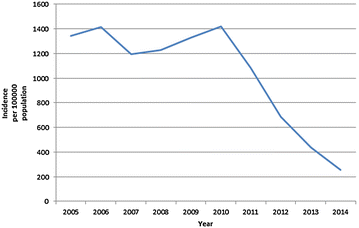
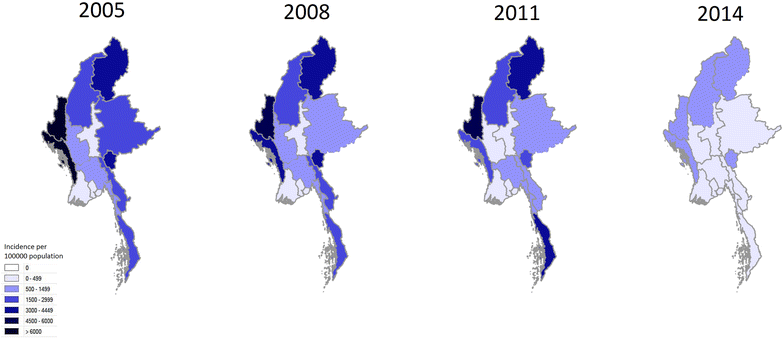
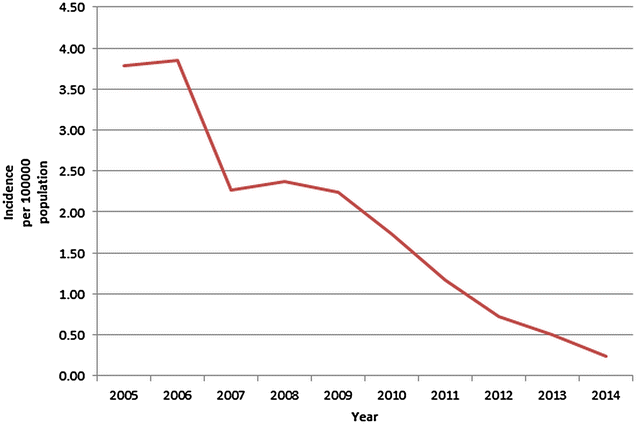
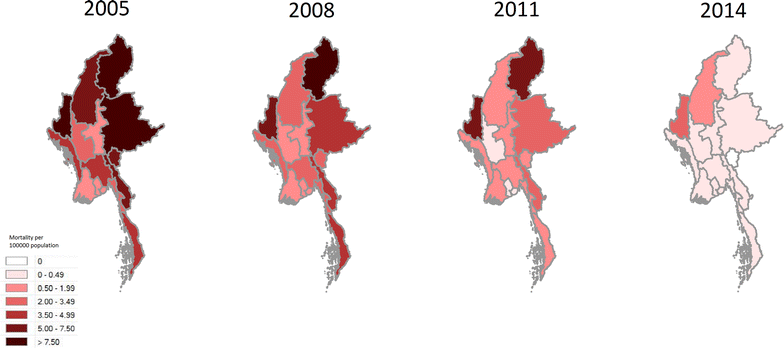
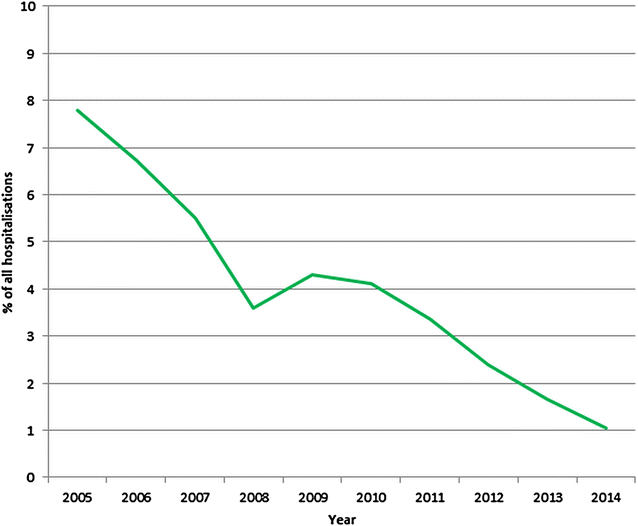
References
-
- WHO. World Malaria Report 2015. Geneva: World Health Organization; 2015.
-
- WHO. Strategy for malaria elimination in the greater Mekong subregion (2015–2030). World Health Organization Regional Office for the Western Pacific; 2015.
MeSH terms
Substances
LinkOut - more resources
Full Text Sources
Other Literature Sources
Medical

